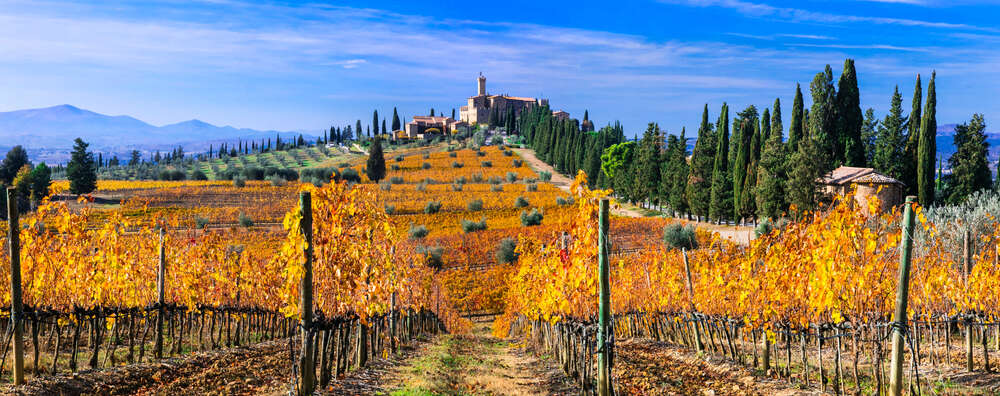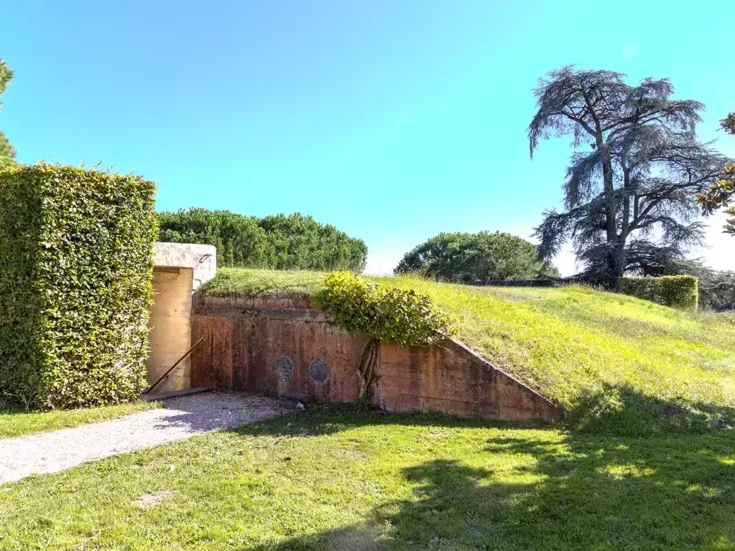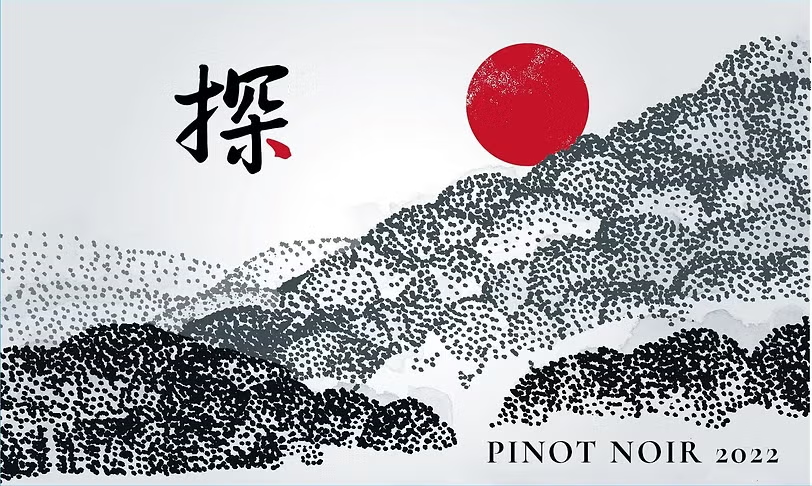
Nicolas Belfrage MW picks out some of the visionary individuals who have contributed most to the soul of Italian wine over the past half century.
First published to mark the 50th anniversary of the birth of DOC in issue 52 of the print edition of The World of Fine Wine in 2016, we are publishing this piece for the first time on worldoffinewine.com as part of our tribute to the hugely respected wine writer Nicolas Belfrage MW, who died last month.
We don’t know, as I write this, how the 2016 vintage will turn out. That it will be seen as an important year in the history of Italian wine, however, is assured, because it marks half a century from that year in which Italy’s quality system—denominazione di origine controllata, or DOC—first saw the light of day.
True, the law itself was on the statute books already in 1963 (the conception, if you like), but it wasn’t until 1966 (the birth, to continue the analogy) that the law was applied to specific wines, such as Barbaresco, Barolo, Brunello di Montalcino, Frascati, Vernaccia di San Gimignano, and Vino Nobile di Montepulciano—all pillars of present-day Italian enology, even if Frascati has fallen somewhat from its then- prominent perch, partly to make way for the property boom of greater Rome.
The 50 years since that momentous launch have not been all plain sailing, yet none but the worst anti-Italian curmudgeon—of the type that abounded 50 years ago, not unjustifiably—would today dispute Italy’s position at the top table of world wines. And as many holes as one might be able to detect in the system—due either to excess of restrictiveness or laxity, or of politics or overinflated local pride—one cannot deny that, overall, DOC has been good for Italy, principally by giving her a structure and providing her with an identity that, more often than not, is impervious to imitation by the rest of the world: a soul, if you like, beyond the mechanics of DNA.
There is a continuing discussion as to which of the quality factors is most important for wine. Some say soil, some climate, some exposition, some grape variety; and many would opt for an interplay of the above, generally known as “terroir.” But there is one all-important factor that stands outside of terroir—and that is man.
What follows is a tribute to some of the people who shaped Italian wines’ soul in its various aspects; in alphabetical order except for the first. I recognize that it is subjective and not exhaustive, but it’s a start, inspired by the fact of that 50th anniversary. I would be happy to receive suggestions for other worthy candidates for this enological Hall of Fame.
Luigi Veronelli
Little known outside of Italy, this Lombardy-based journalist was the postwar period’s principal source of encouragement for those growers and winemakers nationwide who aspired to leave behind the cheap-and-cheerful, overproduced, unhygienic, industrial image of Italian wine and make terroir wine as their forefathers had done, or tried to do, intermittently over 3,000 years.
Creator of the first guide to Italian quality wines, Veronelli virtually dragged Italian wine kicking and screaming into the 20th century. Worshipped by many, hated by a few, Veronelli can fairly be described as the father of modern Italian wine, by virtue of which he gets undisputed top billing here (the others following in alphabetical order).
Piero Antinori

Alphabetical order (Veronelli excepted) has placed this suave, coolly charming Tuscan aristocrat in second place, where he probably belongs on merit.
Antinori’s great contribution was the belief that Italy is capable of making not just good wine but wine of excellence, not only in small volume but in quantity; and the courage to put his, and his ancient family’s, money where his heart was.
Today the Antinori empire, based in an architecturally striking high-tech winery in the Chianti hills but spreading to various other parts of Italy, is hugely commercially successful at a remarkably consistent quality level, the wines being impeccable if lacking just a tad sometimes in that mysterious quality called soul.
Franco Biondi Santi

Though he described himself as a mere guardian of a tradition bequeathed to him by his father and grandfather— specifically the wines of the Greppo estate in the southern Tuscan commune of Montalcino—it was Franco far more than his forebears who fostered the reputation of Brunello as being a wine capable of lasting 100 years.
Some would call it a myth, others a mere exaggeration, but I can testify, from a tasting that took place at Greppo in the mid-1990s, that the 1945 is still vigorous, the 1925 retains a commendable level of fruit, and even the 1891 is gracefully ancient.
It is highly unlikely that any modern Brunello Riserva, or any modern Italian wine, would get much beyond the 50-year mark, but to the late, great Franco goes the credit for establishing an image of grandeur and longevity in an archetypally Italian wine.
Giovanni Conterno
The single greatest wine of Italy? Many would say it’s Monfortino, made from Nebbiolo grapes grown in its Cascina Francia vineyard in the commune of Serralunga in the Barolo zone of Piemonte by the house of Giacomo Conterno, and made at its cellars in nearby Monforte d’Alba.
Run today by Roberto Conterno, it was his late father Giovanni who perfected the tradition handed down by his father Giacomo, involving minimum intervention even to the point of abstaining from temperature control in the fermentation, a potentially highly hazardous procedure.
But that Italy is capable of producing wine at as high a level of quality and complexity as any on earth was obvious to me the moment in 1983 when I first tasted, with Giovanni, the 1974, still aging in large traditional Slavonian oak botti. Heaven!
Marco de Bartoli

A rebel by nature, scion of two powerful Marsala-producing wineries, Marco de Bartoli swore as a young man that he would devote his life to the battle against the degeneration (into cooking wine, for example) of the historic wine of western Sicily.
It cost him his relationship with his father, his wider family, and even his mother by virtue of her deference to his father, but bit by bit Marco collected barrels of high-quality wine suitable for blending into a great Marsala like those on which he had been raised.
Tragically, Marco died at 66, but his children today are following in his footsteps, making sure that real Marsala does not “perish from the earth.” Their pièce de résistance, created by Marco, of course, is their Ventennale, a blend averaging 20 years, though absurdly it can’t be called “Marsala” because it’s unfortified.
Marc de Grazia

Anybody surprised by this entry can reflect that American-Italian Marc spent many years promoting, on the US and other markets, some of the top wines of resurgent Italy before establishing his own Tenuta delle Terre Nere on the high slopes of Mount Etna, which, with its volcanic soil, its own autochthonous vine types Nerello and Carricante, and its combination of altitudes and exposures, is turning out to be one of the world’s most fascinating “new” viticultural areas.
Of course, Etna isn’t new at all—indeed, far more was planted to the vine in the 18th century than today. But growers and vinifiers of the 21st century are making wines of almost Burgundian subtlety and complexity, and Marc was and is at the forefront of that movement.
Elisabetta Foradori

The fact that Elisabetta Foradori is the sole woman in this top 15 is a sad reflection on the extent to which wine production in Italy is dominated by the male sex. This is—let it be said—not a “token” mention but a richly deserved inclusion of one of Italy’s most innovative, most dynamic, and—dare I say?—most feminine producers.
Foradori’s wine country is the Campo Rotaliano in Trentino, and her most important work is with the home-grown grape par excellence, Teroldego. In the vineyard she is biodynamic, and in the winery she is experimental, an example of which is her use of amphorae for vinification purposes. Among white grapes she works mainly with the local Nosiola.
Angelo Gaja

An outstanding publicist and a first-class wine producer to boot, Angelo Gaja has become known for making wines to his own specifications, without too much regard for what the local laws say should or should not be done.
His domain (as inherited from his father in his native Piemonte; he also operates in Tuscany’s Montalcino and Bolgheri as well) is Barbaresco and, more recently, Barolo, but most of his vinous creations skirt around that fact and declare themselves not as DOCG but as Langhe Rosso DOC, the latter allowing 15 percent of other grapes in the blend.
He has been hugely influential in persuading markets that Italian wines need not necessarily be modestly priced.
Giulio Gambelli
No one in the Italian wine business commanded greater respect than the maestro assaggiatore, the master taster Gambelli. Living most of his 80-plus years in a very modest apartment in the less-than-impressive town of Poggibonsi in Tuscany, Gambelli—never a producer, ever the taster supreme—would venture forth to the vineyards of Tuscany such as Monte Vertine, Case Basse, and many more to smell must or wine until the client (producer) got it right.
A traditionalist believing in long maceration on the skins and no temperature control in the fermentation, Gambelli had the olfactory powers of a canine and was rumored to be able to sniff out Cabernet in the Sangiovese at 50 paces. He is sorely missed.
Severino Garofano
A native of Campania, Severino betook himself in the 1960s to the Salento peninsula in Puglia, having graduated in enology at the Campanian wine college in Avellino. There he worked for various wine producers before going freelance. In the 1990s, he bought a property in the town of Copertino called Azienda Monaci.
He is behind several of the top Puglian wines of today, such as Taurino’s Il Patriglione, Candido’s Capello di Prete, Vallone’s Graticciaia, and Monaci’s Le Braci, all based on the Negroamaro grape, usually from old alberello-trained vines and subject to limited appassimento on or off the vine. In other words, Severino Garofano put high-quality wines from southern continental Italy on the map.
Niccolò Incisa della Rocchetta

Sassicaia, from the estate called Tenuta San Guido near the Tuscan village of Bolgheri, in the near-coastal commune of Castagneto Carducci, would be many people’s candidate for best wine of Italy, having won, in the years following the clamorous “discovery” of the extraordinary 1968 vintage, accolades and awards, glasses, grape bunches, 90+ points and so on too numerous to count.
If it is not so considered here, it is because this barrique-aged Cabernet is not in its soul typically Italian but essentially French, specifically Bordelais. But let that not take anything away from the achievement of Marchese Mario and his son Niccolò in creating a vinous legend and opening up a thitherto undiscovered quality zone in this wonderful competitive world of wines.
Antonio Mastroberardino

If Aglianico is considered to be southern Italy’s answer to the Nebbiolo of the north and the Sangiovese of the center, it is thanks in large part to Don Antonio. Continuing a tradition conceived in 1878 and bequeathed to him by his father, as he has now bequeathed it to his son Piero, it was Mastroberardino (the winery) that continued to fly the flag of quality production in the long, lean, earthquake-interrupted years prior to southern Italy’s vinous reawakening toward the end of the 20th century.
Aglianico was Antonio’s first love, Taurasi Radici Riserva his masterpiece; but he also championed the production of the Campanian mountains’ remarkable whites—Greco di Tufo, Fiano di Avellino, and Falanghina.
Carlo Petrini
Not a wine man, originally, but the founder of the by-now worldwide anti-fast-food movement called, of course, Slow Food. As such, he is a man who has profoundly influenced not so much the production of wine but the drinking of wine, as well, obviously, as its food-pairing possibilities, which are endless.
Fine wine should be sipped slowly, reverently, in quality glassware, with due attention, and complementary aromas and tastes should be explored —that’s communist Carlo’s philosophy in a nutshell. But then, Italian communism, which maintains that all should share equally in the joy of life, is so different from the Stalinist version, which seemed to believe we should all be equally miserable together. No wonder it failed—unlike Slow Food.
Giuseppe Quintarelli
Small of stature but huge of heart, mild-mannered, soft-spoken Bepi Quintarelli saw himself as the inheritor and torchbearer of an ancient tradition going back to Roman times—that of passito wines as described in the 5th century ad by Cassiodorus. Bepi’s Valpolicella Amarones and Reciotos were made with infinite, uncompromising care, if minimal intervention, be it in the grape-growing phase, the drying phase (up to four months or more), or the aging phase (many years in large old Slavonian oak barrels).
But beware the sleeping lion’s teeth should you ask for a spittoon—one did not spit Bepi Quintarelli’s wines. Nor, frankly, did one wish to.
Attilio Scienza
No one has done more to bring science into the arena of Italian wine than the aptly named Attilio Scienza, professor at the University of Milan. Whether it involves a study of native and historic vines of Italy, research into the suitability of soils and zones to grape varieties and rootstock, or, more recently, work on the DNA of mainstream and obscure grape types, Scienza has been at the center of the activity.
He has acted as viticultural consultant to several of the most important producers of the new Italy and is the author of hundreds of books, articles, pamphlets, and journals. His work lives on in his numerous students, collaborators, and colleagues.
The World of Fine Wine was saddened by the passing of Nicolas Belfrage MW in September. Easily the most significant anglophone writer on Italian wine of his generation, Belfrage was one of WFW’s longest serving and most respected contributors.
Over the next few days, as a tribute to his immense contribution to wine-writing and Italian wine, we are posting some of the best of Belfrage’s pieces from the print issue of WFW on worldoffinewine.com for the first time.






